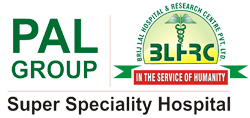Aneurysms, though often unheard of in casual conversation, are silent threats lurking within our circulatory system. These abnormal bulges in blood vessel walls can be life-threatening, yet they often go unnoticed until they rupture. In this blog, we will delve into the world of aneurysms, exploring their causes, symptoms, diagnosis, treatment, and prevention.
What is an Aneurysm?
An aneurysm is a localized, abnormal dilation or bulging of a blood vessel. These bulges can occur in arteries or veins throughout the body, but they are most commonly found in the arteries. Aneurysms develop due to weakened blood vessel walls, which can be attributed to a variety of factors.
Major Causes of Aneurysms
- Genetic Predisposition: A family history of aneurysms can increase an individual’s risk of developing one. Certain genetic disorders, such as Marfan syndrome and Ehlers-Danlos syndrome, are associated with a higher likelihood of aneurysm formation.
- High Blood Pressure: Chronic hypertension puts excessive strain on blood vessel walls, weakening them over time and increasing the risk of aneurysms.
- Smoking: Tobacco use is a major risk factor for aneurysm development. The chemicals in cigarettes damage blood vessel walls and promote inflammation, making aneurysms more likely.
- Trauma: Physical injury, such as a car accident or a severe fall, can damage blood vessels and lead to aneurysms.
- Atherosclerosis: The buildup of fatty deposits in arteries narrows them and weakens their walls, making them more susceptible to aneurysms.
Symptoms
Aneurysms are often asymptomatic until they rupture. When they do, the symptoms can be severe and may include:
- Sudden, intense pain, often described as the worst ever experienced.
- Dizziness or loss of consciousness.
- Rapid heart rate and low blood pressure.
- Difficulty speaking or understanding speech.
- Numbness or weakness, particularly on one side of the body.
- Vision changes.
- Seizures.
Treatment
- Monitoring: Small, stable aneurysms may only require regular monitoring by a healthcare provider to ensure they do not grow or pose an immediate threat.
- Medications: Certain medications, such as beta-blockers, can help lower blood pressure and reduce the risk of aneurysm growth and rupture.
- Endovascular Repair: Minimally invasive procedures, such as stent graft placement, can be used to reinforce the weakened blood vessel walls and divert blood flow away from the aneurysm.
- Surgical Repair: In some cases, open surgery may be necessary to remove or repair the aneurysm.
Prevention
Preventing aneurysms involves addressing the risk factors:
- Manage High Blood Pressure: Regular check-ups and adherence to prescribed medications can help control hypertension.
- Quit Smoking: Ceasing tobacco use can significantly reduce the risk of aneurysm development.
- Healthy Diet: Adopting a diet low in saturated fats and rich in fruits, vegetables, and whole grains can help prevent atherosclerosis.
- Exercise: Regular physical activity promotes heart health and reduces the risk of aneurysms.
- Genetic Testing: Individuals with a family history of aneurysms may benefit from genetic counseling and testing to assess their risk.
Conclusion
Aneurysms are stealthy threats that can have devastating consequences if left untreated. Understanding their causes, symptoms, diagnosis, treatment options, and prevention strategies is crucial to safeguarding our circulatory system. Brij Lal Hospital use the latest treatment services technology to the Best Hospital in Haldwani available.
By adopting a healthy lifestyle and managing risk factors, we can minimize the chances of aneurysm development and lead healthier lives. Remember, knowledge is power, and when it comes to aneurysms, early detection and intervention can save lives.
